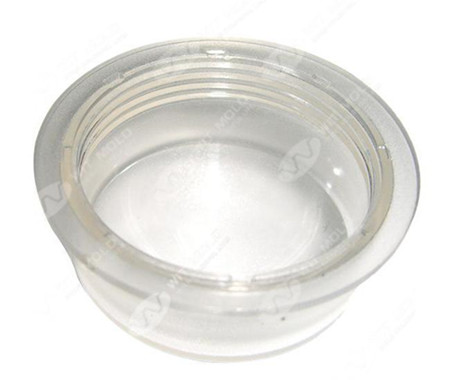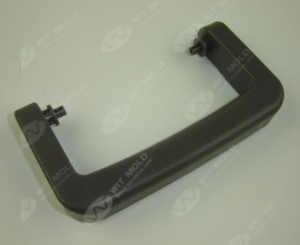Structural foam molding is a low-pressure foam injection molding process in which molten resin is injected with nitrogen or a chemical blowing agent. The resin is then injected into the cavity without overfilling or filling it. The blowing agent or gas then expands to push the molten resin to the end of the cavity. As the part cools, the internal pressure of the foaming action absorbs internal shrinkage and reduces sinkage on the ribs or heavy sections.
Structural foam molding is a low-pressure injection molding process that can produce very large structural parts. Molten plastic is mixed with a blowing agent and injected into the mold to "foam" the plastic. Structural foam injection molding is ideal for large parts because the foam bubbles in the resin matrix squeeze out the resin, reducing the incidence of side-sinking of the part. Structural foam molded parts are typically thick, with wall thicknesses approaching 0.250 inches, making them ideal for fabricating invisible plastic structural components. Visible parts require sanding, painting and finishing.
The molding process for structural foam parts is very similar to traditional reactive injection molding methods. The two components, such as polyol and isocyanate (which combine to form polyurethane) are stored in separate containers in liquid form. They are mixed together to form a resin, which is then injected into a pre-prepared mold and cured by a chemical reaction.
In addition to the polyol and isocyanate, inert gas or chemical blowing agent is added to the mixture during the injection process. This changes the nature of the chemical reaction that ultimately occurs.
Compared to standard solid polyurethane reaction injection molding, fewer polyols and isocyanates are used, so the resin does not completely fill the mold. Instead, the gas or blowing agent is activated by the reaction between the two components. It expands and fills the blank space of the mold with foam. This produces a "honeycomb" texture called the structural foam core. The surface cells collapse as they come into contact with the mold walls, forming a solid surface layer on the outside of the material.
Benefits of Structural Foam Molding
There are many benefits to using the foam injection molding process, including.
Uses less energy - The process uses less energy per pound of plastic, and there is a less raw material in the finished product.
Lower molding costs - Part weight can be reduced by up to 15%, resulting in lower material costs without compromising structural integrity.
Greater product design capabilities - smaller parts with contrasting functions can be combined into one part to reduce costs and increase efficiency.
Raw material savings - low-pressure molding consumes less raw material than comparable methods.
Family molds run together - Because of the larger platen size, family molds can be run together to create complete assemblies without waiting.
Improved dimensional stability- Low-pressure injection combined with expanded nitrogen produces parts with less internal stress. The result is a foam injection molded product that stays straighter and has greater dimensional stability when subjected to temperature changes and prolonged exposure to weather.
Improved weight-to-weight strength - The structural properties of molten resin cores can improve performance per pound of plastic.
Wide range of materials - WIT MOLD's low-cost molding capabilities allow the use of many types of resins.
Efficient and cost-effective - Our structural molding process provides an efficient and cost-effective way to produce advanced quality, easily repeatable parts for your next foam injection molding project.
Contact WIT MOLD today about your structural foam molding project.




